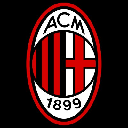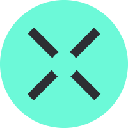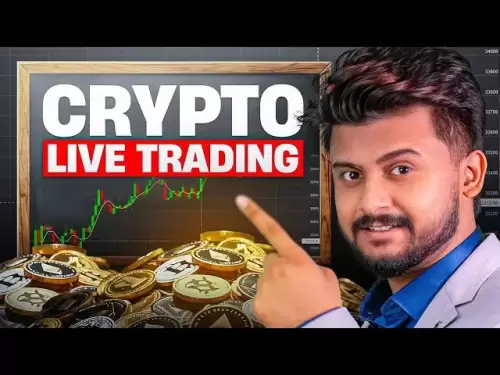-
 Bitcoin
Bitcoin $104,092.7082
-3.90% -
 Ethereum
Ethereum $2,500.1510
-9.45% -
 Tether USDt
Tether USDt $1.0003
0.02% -
 XRP
XRP $2.1161
-5.92% -
 BNB
BNB $644.7652
-3.34% -
 Solana
Solana $143.3632
-10.62% -
 USDC
USDC $0.9995
-0.03% -
 Dogecoin
Dogecoin $0.1728
-9.80% -
 TRON
TRON $0.2700
-2.70% -
 Cardano
Cardano $0.6282
-9.47% -
 Hyperliquid
Hyperliquid $38.5896
-7.04% -
 Sui
Sui $2.9976
-10.50% -
 Chainlink
Chainlink $13.0865
-10.97% -
 UNUS SED LEO
UNUS SED LEO $8.8697
1.35% -
 Stellar
Stellar $0.2563
-7.44% -
 Bitcoin Cash
Bitcoin Cash $401.8213
-6.21% -
 Avalanche
Avalanche $18.8844
-11.63% -
 Toncoin
Toncoin $2.9457
-8.46% -
 Shiba Inu
Shiba Inu $0.0...01163
-9.64% -
 Hedera
Hedera $0.1538
-10.65% -
 Litecoin
Litecoin $82.4785
-9.46% -
 Polkadot
Polkadot $3.7430
-9.96% -
 Ethena USDe
Ethena USDe $1.0004
-0.01% -
 Monero
Monero $306.8529
-6.55% -
 Dai
Dai $0.9998
0.01% -
 Bitget Token
Bitget Token $4.4842
-5.28% -
 Pepe
Pepe $0.0...01069
-13.19% -
 Uniswap
Uniswap $7.0207
-13.47% -
 Pi
Pi $0.5498
-13.03% -
 Aave
Aave $268.2967
-9.88%
How to make money from Bitcoin contract hedging
Bitcoin contract hedging offers traders a sophisticated approach to manage risk and enhance profits by employing futures contracts that offset potential losses from price fluctuations in the spot market.
Nov 12, 2024 at 05:28 pm

How to Make Money from Bitcoin Contract Hedging
In the realm of cryptocurrency trading, Bitcoin contract hedging has emerged as a sophisticated strategy for generating profits while managing risk. By understanding the underlying principles and following a systematic approach, traders can harness the potential of this technique to enhance their overall trading performance.
1. Overview of Bitcoin Contract Hedging
Bitcoin contract hedging involves using futures contracts to offset the potential losses from price fluctuations in the spot market. Futures contracts are agreements to buy or sell a specified amount of Bitcoin at a predefined price on a future date.
Traders can employ hedging strategies to:
- Protect against adverse price movements: Hedging can minimize the impact of unexpected price drops, ensuring traders do not incur significant losses on their spot positions.
- Secure profits: Hedging can lock in realized profits by selling futures contracts that counterbalance existing spot positions.
- Reduce volatility exposure: Hedging can mitigate the inherent volatility of the Bitcoin market, providing stability to trading portfolios.
2. Choosing the Right Hedge Ratio
The hedge ratio, expressed as a percentage, determines the proportion of the spot position to be hedged using futures contracts. Selecting the optimal hedge ratio depends on the trader's risk tolerance and market outlook:
- Conservative Hedging: A hedge ratio above 100% implies hedging more than the spot position, resulting in a lower but more secure profit potential.
- Moderate Hedging: A hedge ratio around 100% offers a balance between risk reduction and profit potential, effectively offsetting most of the spot position's potential losses.
- Aggressive Hedging: A hedge ratio below 100% exposes the trader to more market risk but also increases the potential for greater profits.
3. Determining the Hedge Duration
The duration of the hedge, corresponding to the expiry date of the futures contract, should align with the anticipated price fluctuations:
- Short-Term Hedging: Suitable for short-term market movements, with futures contracts expiring within a few weeks to a month.
- Mid-Term Hedging: Ideal for hedges lasting several months, providing protection against medium-term price risks.
- Long-Term Hedging: Used for hedging over extended periods, typically spanning several months to a year, offering stability in volatile market conditions.
4. Monitoring and Adjusting the Hedge
Hedging is an active process that requires ongoing monitoring and adjustments to remain effective:
- Monitoring Price Movements: Traders must closely track the spot and futures market prices, observing any deviations from the intended hedge ratio.
- Adjusting the Hedge: As price movements occur, traders may need to adjust the hedge ratio or duration to maintain the desired level of protection or profit potential.
- Exiting the Hedge: When the price stabilizes or the hedging objective is met, traders can exit the hedge by closing the futures position, releasing the hedged spot position.
5. Advanced Hedging Techniques
Experienced traders may employ advanced hedging techniques to enhance their strategies:
- Basis Trading: Exploiting price differences between the spot and futures markets, traders can profit from convergence or divergence.
- Cross-Asset Hedging: Hedging using futures contracts on different underlying assets, such as Ethereum or Ripple, to diversify risk and capitalize on correlations.
- Options Hedging: Utilizing options contracts to gain sophisticated hedging capabilities, such as downside protection or potential profit enhancement.
6. Risk Management
Hedging, while a powerful tool, carries inherent risks:
- Hedging Cost: Futures contracts involve commissions and fees that can reduce potential profits.
- Unintended Exposure: Miscalculating the hedge ratio or duration can result in unintended market exposure and losses.
- Rebalancing Complexity: Adjusting the hedge as the market evolves can be challenging, requiring constant monitoring and timely execution.
7. Choosing a Suitable Exchange
Selecting the right exchange for Bitcoin contract hedging is crucial for reliability, liquidity, and trading costs:
- Reputation and Trust: Choose reputable exchanges with a proven track record and strong security measures.
- Liquidity: Ensure the exchange has ample liquidity for Bitcoin futures contracts to avoid price slippage during trades.
- Trading Fees: Compare the trading fees charged by different exchanges to minimize expenses and maximize profitability.
- Supported Fiat Currencies: Consider the availability of supported fiat currencies for convenient deposit and withdrawal options.
- Customer Support: Choose exchanges that provide responsive customer support in case of any queries or issues.
Disclaimer:info@kdj.com
The information provided is not trading advice. kdj.com does not assume any responsibility for any investments made based on the information provided in this article. Cryptocurrencies are highly volatile and it is highly recommended that you invest with caution after thorough research!
If you believe that the content used on this website infringes your copyright, please contact us immediately (info@kdj.com) and we will delete it promptly.
- HashFly, a Pioneering Force in the Cloud Mining Industry, Solidifies Its Position as the Most Trusted Platform of 2025
- 2025-06-13 11:00:25
- Nimanode Raises Over 15% of its Soft Cap in Token Presale
- 2025-06-13 11:00:25
- US President Donald Trump released a prerecorded message for attendees of Coinbase's State of Crypto Summit as Congress considers legislation to regulate payment stablecoins and establish a digital asset market structure framework.
- 2025-06-13 10:55:12
- Xpfinance (XPF) Token Presale Surpasses 40% of Its Soft Cap Allocation
- 2025-06-13 10:55:12
- Official Trump (TRUMP) Is Closing in on VeChain (VET) in Market Cap – and Fast
- 2025-06-13 10:50:11
- The race for the next big crypto coin is on. SUI is flashing bullish signals with a possible 2x breakout.
- 2025-06-13 10:50:11
Related knowledge

Cryptocurrency K-line chart technical analysis manual: Learn these methods to increase your chances of making a profit
Jun 11,2025 at 11:21pm
Understanding the Basics of K-line ChartsK-line charts, also known as candlestick charts, are one of the most widely used tools in cryptocurrency trading. Each K-line represents a specific time period and provides information about the open, high, low, and close prices during that interval. The body of the candle shows the relationship between the openi...

The Importance of K-line Chart Analysis in Cryptocurrency Trading: From Theory to Practical Cases
Jun 11,2025 at 04:56pm
Understanding the Basics of K-line ChartsK-line charts, also known as candlestick charts, are a visual representation of price movements over specific time intervals. Each K-line encapsulates four critical data points: the opening price, closing price, highest price, and lowest price within a given timeframe. These charts originated in Japan during the ...

Cryptocurrency K-line Chart Interpretation Guide: How Novices Can Quickly Master the Basics of Technical Analysis
Jun 10,2025 at 08:56pm
Understanding the Basics of K-line ChartsK-line charts, also known as candlestick charts, are one of the most widely used tools in cryptocurrency trading for analyzing price movements. Each K-line represents a specific time period and shows the opening, closing, high, and low prices during that interval. For novices, grasping how to read these elements ...
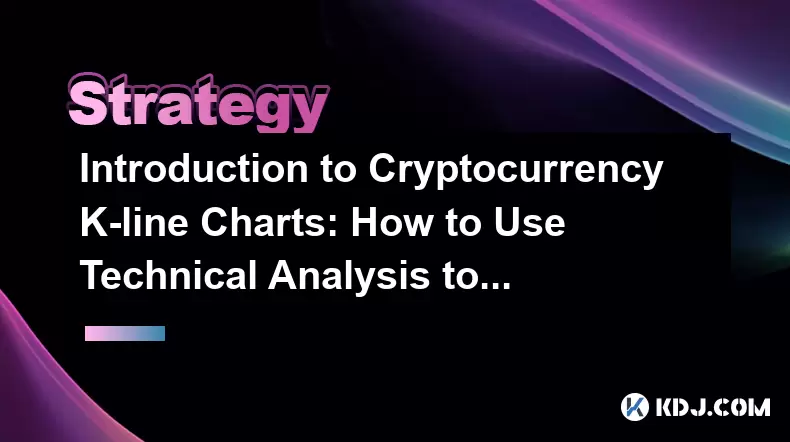
Introduction to Cryptocurrency K-line Charts: How to Use Technical Analysis to Optimize Trading Decisions
Jun 12,2025 at 03:56pm
Understanding the Basics of K-line ChartsK-line charts, also known as candlestick charts, are one of the most essential tools used in cryptocurrency trading. Originating from Japan, these charts visually represent price movements over specific time intervals. Each candlestick displays four key pieces of information: the opening price, closing price, hig...
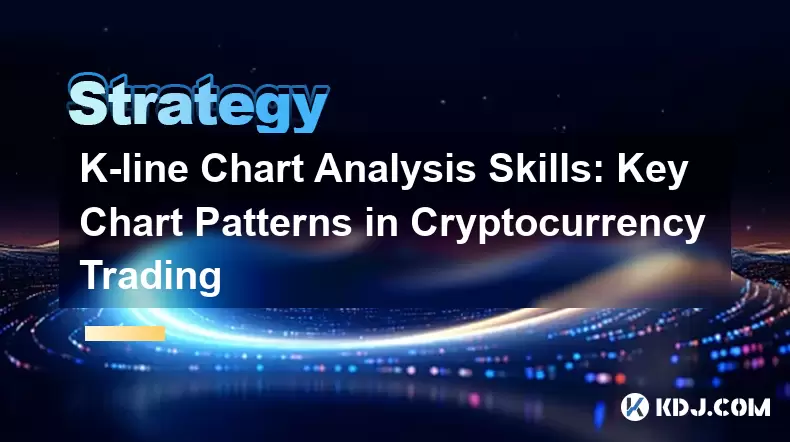
K-line Chart Analysis Skills: Key Chart Patterns in Cryptocurrency Trading
Jun 13,2025 at 10:21am
Understanding the Basics of K-line Charts in Cryptocurrency TradingK-line charts, also known as candlestick charts, are essential tools for analyzing price movements in cryptocurrency markets. Each candlestick represents a specific time frame and provides information about the open, high, low, and close (OHLC) prices during that period. In crypto tradin...
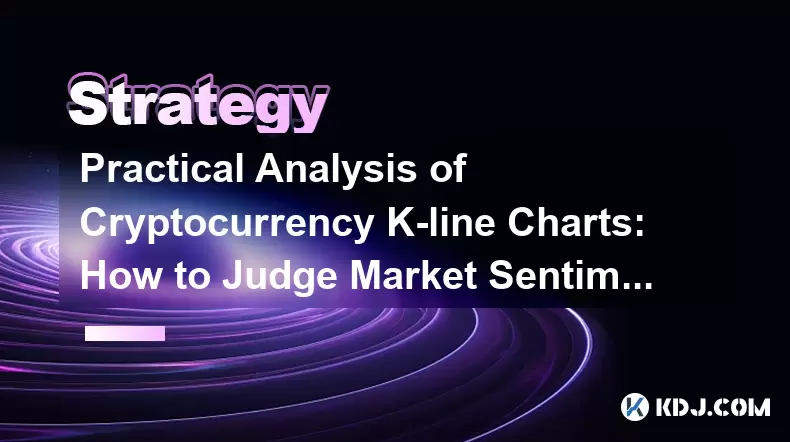
Practical Analysis of Cryptocurrency K-line Charts: How to Judge Market Sentiment through Charts
Jun 10,2025 at 09:42pm
Understanding the Basics of Cryptocurrency K-line ChartsCryptocurrency K-line charts, also known as candlestick charts, are essential tools for analyzing price movements in the crypto market. Each candlestick represents a specific time frame, such as 1 minute, 5 minutes, or even daily intervals. The structure of a K-line includes four key data points: o...

Cryptocurrency K-line chart technical analysis manual: Learn these methods to increase your chances of making a profit
Jun 11,2025 at 11:21pm
Understanding the Basics of K-line ChartsK-line charts, also known as candlestick charts, are one of the most widely used tools in cryptocurrency trading. Each K-line represents a specific time period and provides information about the open, high, low, and close prices during that interval. The body of the candle shows the relationship between the openi...

The Importance of K-line Chart Analysis in Cryptocurrency Trading: From Theory to Practical Cases
Jun 11,2025 at 04:56pm
Understanding the Basics of K-line ChartsK-line charts, also known as candlestick charts, are a visual representation of price movements over specific time intervals. Each K-line encapsulates four critical data points: the opening price, closing price, highest price, and lowest price within a given timeframe. These charts originated in Japan during the ...

Cryptocurrency K-line Chart Interpretation Guide: How Novices Can Quickly Master the Basics of Technical Analysis
Jun 10,2025 at 08:56pm
Understanding the Basics of K-line ChartsK-line charts, also known as candlestick charts, are one of the most widely used tools in cryptocurrency trading for analyzing price movements. Each K-line represents a specific time period and shows the opening, closing, high, and low prices during that interval. For novices, grasping how to read these elements ...

Introduction to Cryptocurrency K-line Charts: How to Use Technical Analysis to Optimize Trading Decisions
Jun 12,2025 at 03:56pm
Understanding the Basics of K-line ChartsK-line charts, also known as candlestick charts, are one of the most essential tools used in cryptocurrency trading. Originating from Japan, these charts visually represent price movements over specific time intervals. Each candlestick displays four key pieces of information: the opening price, closing price, hig...

K-line Chart Analysis Skills: Key Chart Patterns in Cryptocurrency Trading
Jun 13,2025 at 10:21am
Understanding the Basics of K-line Charts in Cryptocurrency TradingK-line charts, also known as candlestick charts, are essential tools for analyzing price movements in cryptocurrency markets. Each candlestick represents a specific time frame and provides information about the open, high, low, and close (OHLC) prices during that period. In crypto tradin...

Practical Analysis of Cryptocurrency K-line Charts: How to Judge Market Sentiment through Charts
Jun 10,2025 at 09:42pm
Understanding the Basics of Cryptocurrency K-line ChartsCryptocurrency K-line charts, also known as candlestick charts, are essential tools for analyzing price movements in the crypto market. Each candlestick represents a specific time frame, such as 1 minute, 5 minutes, or even daily intervals. The structure of a K-line includes four key data points: o...
See all articles
















